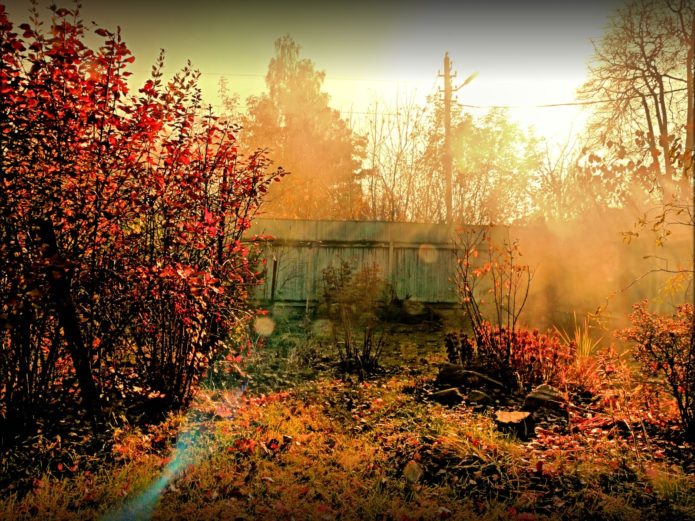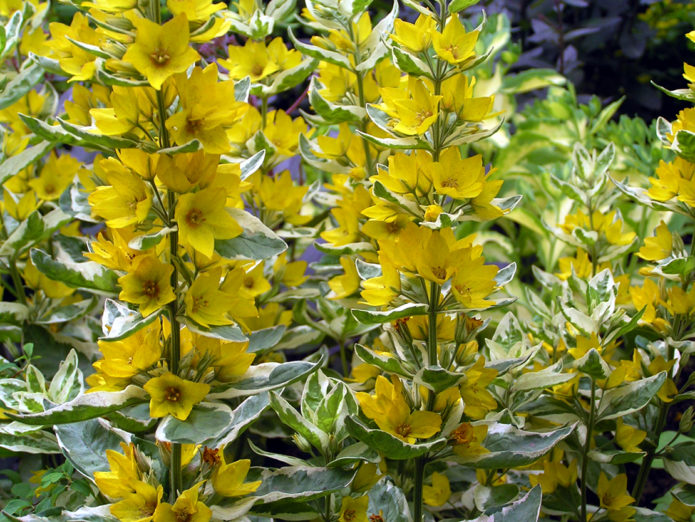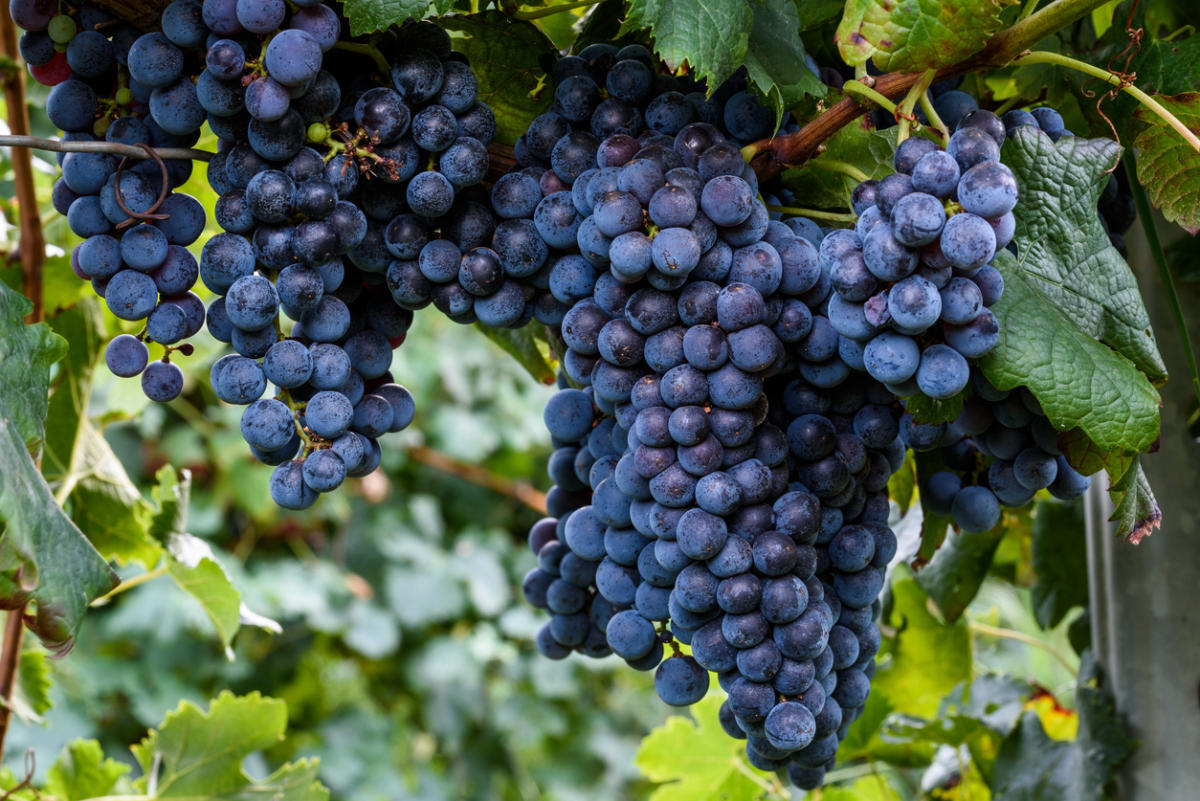Gardeners and gardeners know: autumn planting saves precious spring hours, when there is so much work that you do not know which one to tackle first. According to experts, plants, including ornamental ones, also like this agricultural technique - being tested in winter cold makes them stronger, activates internal resources. The result is a generous, and in most cases earlier than usual flowering. In the fall, you can plant almost any perennial flowers. Which one to choose - everyone decides for himself, but there are some favorites that are found in every second garden.
Content
What is the autumn planting of perennials for?
A prerequisite for planting many crops is the stratification (hardening) of seeds. With autumn plantings, this process occurs naturally. The sprouts hatched from such seeds endure weather tests. Youngsters, as a rule, are not afraid of returning spring colds and even frosts, which would be fatal for seedlings grown in greenhouse conditions.
Flowers that are planted in the fall have other benefits:
- they begin to bloom about half a month earlier than those sown in spring, and retain their decorative effect throughout the season;
- their immunity is stronger, they are more resistant to diseases and pests;
- in the future, they do not require frequent transplants, like perennials grown in the traditional way (once every 2-3 years is enough);
- give high-quality planting material obtained by dividing the plant into several parts;
- they are unpretentious in care.
A small disadvantage can be considered the fact that seed consumption during autumn plantings is slightly higher than in spring. The fact is that as a result of stratification, non-viable seeds die. However, it is not worth solving this problem by deeply deepening the seeds into the soil - this will not protect them from frost in any way, but in the spring it will make it difficult for the sprouts to move towards the sun.
What perennial flowers can be planted in the fall: 7 best options
Gardeners have long been accustomed to the fact that ornamental bulbous and shrub crops are planted in the fall. The fact that perennials can also be grown in this way without cluttering the window sills with containers with seedlings in spring is a pleasant discovery for many. The main thing is not to be mistaken with the timing of planting in the country: in central Russia it is usually mid-November, in the southern regions - the end of the month, in the northern regions - its beginning. The schedule may change depending on the vagaries of the weather. It is important not only to know what flowers are planted in the fall, but also to take into account the peculiarities of their planting and growing, and also take into account the time that will have to be spent on caring for them.
Perennial aster
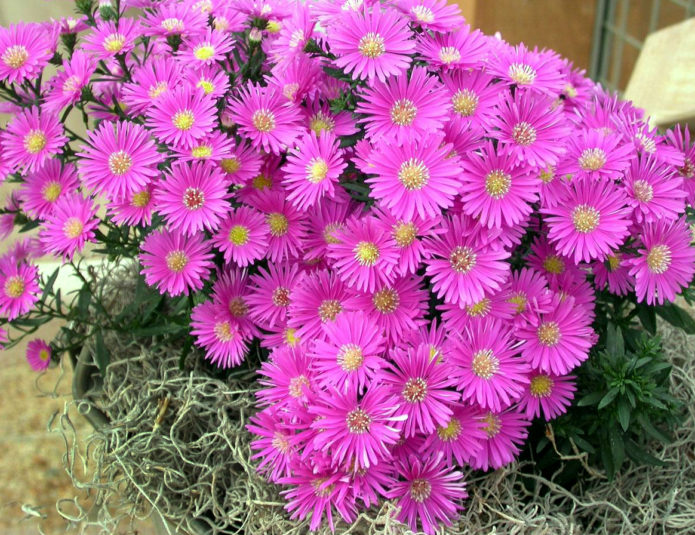
Asters differ not only in terms of flowering time and height, but also in the structure of flowers - they are pink, peony, chrysanthemum
This culture in ornamental gardening amazes with a variety of species, however, early flowering varieties are best suited for autumn plantings, for example, Alpine aster (late flowering ones are usually planted in spring).
The seeds are sown in November. A prerequisite for planting is frozen ground. Sometimes perennial aster is sown even in early December, right into the snow. In order for friendly shoots to appear in the spring, it is impossible to deepen the seeds more than 0.5 cm into the soil.
For successful growth, a number of conditions must be met: moisture should not stagnate on the site, otherwise the roots will begin to rot, and the place should be sunny enough - asters will die in the shade.
The flowering of early varieties, which were sown in autumn, begins in May-June (2-3 weeks earlier than in spring plantings). If seeds of late flowering plants were used for sowing, flowering will occur in September-November.
Spring care consists in thinning: if the sprouts have sprouted very actively, some of them will have to be removed - asters will bloom luxuriantly and brightly if the distance between them is 20-30 cm. Also, plantings may need watering when the moisture formed after the snow melts is used up ... If a dense crust forms on the soil surface, it must be loosened. During the further growing season, the flowers will require regular weeding, and once a season, fertilizing with complex mineral fertilizer is needed.
For late autumn, experts also recommend planning the reproduction of perennial asters with the help of seedlings - on the eve of winter they are seated in a permanent place. Flowers have time to take root well, provided that the soil for them was prepared 2-3 weeks before planting, and the place is sunny.
Delphinium
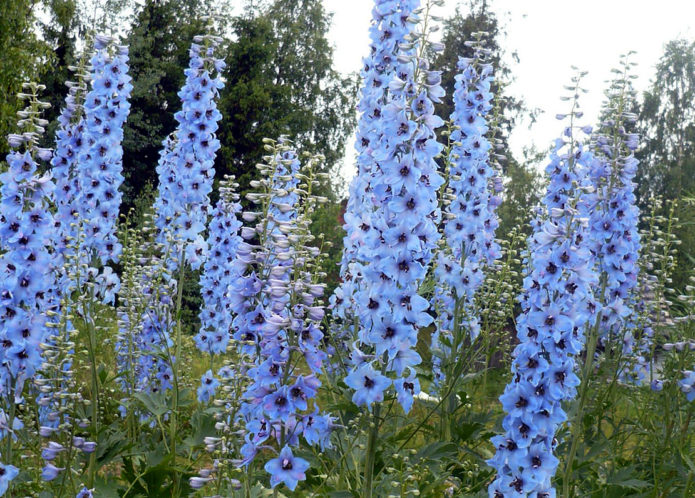
Growing a delphinium from seeds is much cheaper and easier than purchasing ready-made planting material
Podzimny sowing is a competent solution for those who would like these flowers to bloom on a site in May or early June. For the delphinium, this is especially important, since then the plant has a chance to please the gardener with repeated flowering in the fall (provided that the peduncles of the "first wave" were cut).
Depending on the nature of the autumn weather, delphinium seeds are sown in open ground in October or November. They are sprinkled with a thin layer of a mixture of peat and sand and covered with spruce branches for the winter, however, the survival rate of seedlings will still be slightly lower than after spring planting. In this regard, experts recommend increasing the volume of consumed seeds by 20-30% in the fall. Seedlings will be strong and friendly, provided that a sunny site has been chosen, and the soil is well prepared - dug up and fertilized.
In September, delphiniums are propagated by dividing the rhizome. In plants aged 3-4 years, it is cut into 7-10 parts. A prerequisite is the presence of buds or at least one shoot on each part. The plant tolerates winter well and blooms profusely in June.
Delphiniums are unpretentious in care, but watering, especially in dry seasons, is important for them.
Herbaceous peony
This plant is propagated by divisions, and, as a rule, in autumn. In the spring, the peony is not yet ready for this procedure - its root system is depleted, since all the plant's forces are spent on building up the green mass and forming buds. In addition, after such manipulations, the peony will still not have time to bloom in the still just beginning season.
If reproduction by divisions occurs in autumn (in the middle lane - in early September), the first inflorescences will appear in May. September for the formation of new bushes of peonies is good because the heat ends, night temperatures differ significantly from daytime ones (the plant is hardened), it rains more often, which has a beneficial effect on the condition of the soil.
In different regions, the timing of these works is slightly different:
- in Siberia, the optimal period is from August 20 to September 20;
- in the Urals - from August 20 to the end of September;
- in the Volga and Moscow regions - from late August to late September.
The main condition is that 35–45 days should remain before the onset of cold weather. This time is enough for the peony to grow additional roots and firmly consolidate in the ground. Delaying the timing is fraught with the fact that a poorly rooted plant will come out of winter with a weakened immune system and will not be able to withstand pests and diseases.
Caring for a newly planted plant involves watering up to 10 liters per bush. In the future, rains help solve the problem, but if the autumn is dry, the plant may need 2-3 watering before winter. Top dressing is not needed only if fertilizers were applied to the soil at the stage of preparation for planting. In any case, nitrogen is contraindicated for a peony at this time - this fertilizer activates the growth of green shoots, which is extremely undesirable on the eve of winter.
Those who have decided to propagate this flower using seeds that ripen in boxes in place of the former bud are advised to abandon the idea. At the same time, the varietal characteristics of the peony are often not preserved, and it will take at least five years to wait for flowering.
Primrose
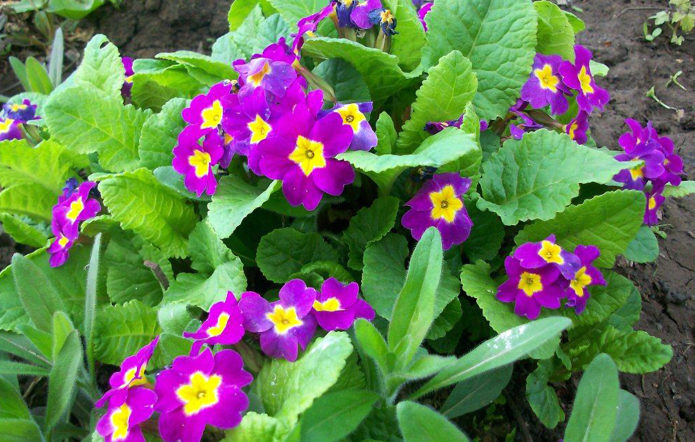
Bushes should be planted in such a way that when the planting grows closed, the planting is closed: primrose negatively refers to excess space
Gardeners love primroses because they are one of the first to decorate flower beds with bright colors. So that flowering begins in May, seeds are sown in open ground in the fall (in the middle lane - at the end of September). The seeds are buried minimally - by 0.5 cm, the plantings are covered in order to protect them from severe frosts in winter.
The conditions under which one can count on the successful growth of future plants are a well-chosen planting site (primroses like partial shade), fertility and sufficient soil moisture.
If the planting of flowers is planned for the decoration of the rock garden, the south side should be avoided.
If not sowing, but plant transplantation is required, then in the fall this operation should be handled at the end of September or October in such a way that the primrose has enough time to root before the onset of cold weather, otherwise the winter will be fatal for it. In this case, it is easier for residents of the southern regions, they have more time.
The division of the bushes is also carried out in the fall, after the end of the flowering phase. It is recommended to cover young plants without waiting for the onset of severe cold weather.
Phlox
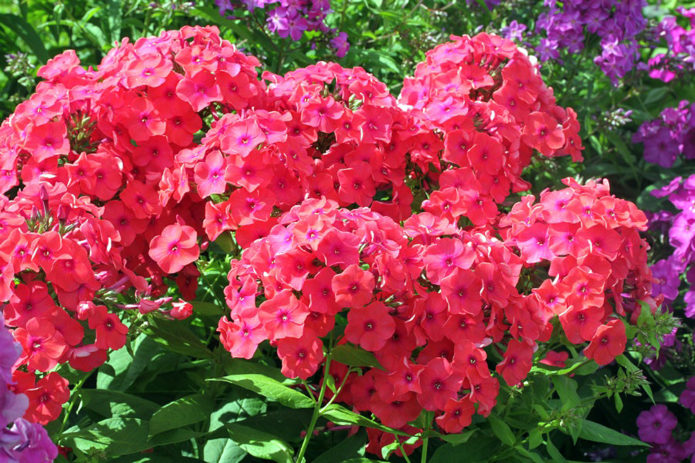
When buying planting material, you need to pay attention to the presence of up to 5 correctly colored shoots, the length of which reaches about 6 cm
It is customary to propagate phlox by cuttings, since they take root well, and it is best to do this in autumn: spring plantings postpone flowering for a whole year, and "autumn" ones will bloom next summer.
In the old days in Russia phloxes were called "calico".
More precisely, the timing of planting is determined depending on the varieties of the flower: early and mid-early form the so-called "buds of renewal" by the end of August. This means that the plant can already be propagated. For late varieties of phlox, this period is postponed to the second decade of September. In any case, the work on propagation and replanting of the bushes should be completed by mid-October so that young plants do not suffer from frost. It usually takes 30–40 days to root the cuttings.
Phlox planted in the fall requires minimal care, even watering is usually not needed, since the autumn rains provide the plant with moisture. But feeding will come in handy - the complex fertilizer is mixed with ash and scattered over the frozen soil. In the spring, planting is watered with water diluted in it with mineral fertilizer, thanks to which the flowering becomes richer, and its periods are long.
Plants planted in autumn are protected from frost by mulching - sawdust, peat. In the spring, as soon as the snow melts, the mulch is immediately removed.
Astilba
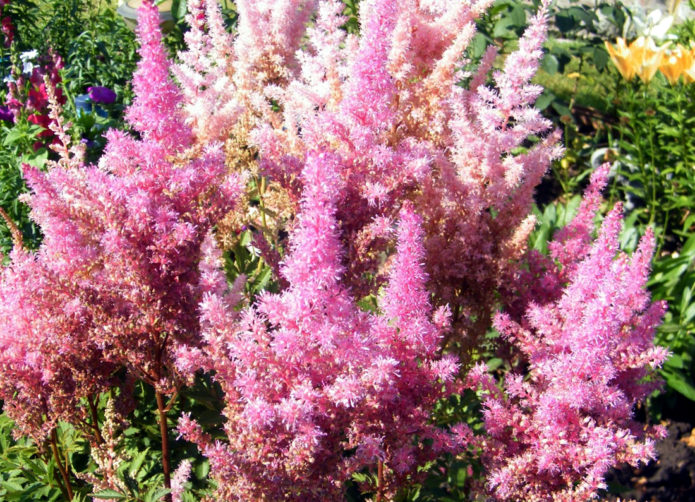
Astilbes look especially impressive against the background of ferns and in the shade of conifers, but single plantings are also possible
This beautiful plant, flowering from June to August, reproduces best by dividing the bush. The work is recommended to be carried out in autumn, when the average daily temperature does not drop below +5 within 2-3 weeks.aboutFROM. In central Russia, the beginning of September is considered a suitable time for planting astilbe.
Flowering begins the next summer (in the second half of it), however, experts recommend not to allow this, cut off the growing flower stalks. Unpopular "surgical" measures have to be taken because an insufficiently strong plant sometimes dies, giving the flowers all its strength.
Another feature of this culture is the growth of the root system in the form of an island that rises above the soil level. This seriously weakens the plant, so astilbe needs a transplant every 4–5 years. It is carried out in early September, while a large bush is divided into several small ones. If the work is postponed to a later date, the soil around the fresh plantings must be mulched with sawdust, straw or spruce branches) so that the plants can successfully survive the winter cold.
Caring for astilba usually comes down to watering: as soon as it receives less water, the inflorescences become small, the leaves wither.
Astilba comfortably tolerates cold Russian winters (down to -37 ° C), practically does not get sick, and garden pests are not particularly interested in her.
Verbeynik point
The plant, which has been gaining popularity with flower growers in recent years, is usually propagated by seeds or vegetatively. Both are usually done in the fall, but preference is still given to the second method, and here's why: a plant that has grown from seeds begins to bloom only in the third year. With vegetative propagation by dividing the bush, flowers appear at the beginning of the coming June and continue to delight with bright colors until mid-August.
The homeland of loosestrife is China, where you can find more than 70 species of this flower.
Planting works are carried out in September-October. In order for the plant to better prepare for winter, there should be no young leaves on it at the time of planting. If the whole bush is transplanted to a new place, without dividing into several, you need to make sure that the prepared hole is deeper than the previous one. This is a necessary condition for flowering not to be late, but to start the next year.
Other conditions under which the loosestrife will retain its decorative effect for a long time are fertile land and rather high soil moisture. But he is not afraid of the winter cold, and he does not need to cover the flowers.
Having mastered the autumn planting of perennials in different ways, the gardener achieves that in the spring he does not waste time growing seedlings, and at the very beginning of the season he has flower beds with strong plants that have been hardened by the winter cold. They do not need to adapt in the open field, they have enough strength to start flowering earlier than it does with spring planting.
